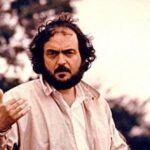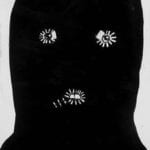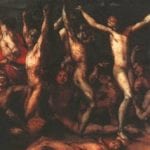 Creepy
Creepy  Creepy
Creepy  Technology
Technology 10 Scientific Breakthroughs of 2025 That’ll Change Everything
 Our World
Our World 10 Ways Icelandic Culture Makes Other Countries Look Boring
 Misconceptions
Misconceptions 10 Common Misconceptions About the Victorian Era
 Mysteries
Mysteries 10 Strange Unexplained Mysteries of 2025
 Miscellaneous
Miscellaneous 10 of History’s Most Bell-Ringing Finishing Moves
 History
History 10 Great Escapes That Ended Right Back in Captivity
 Weird Stuff
Weird Stuff 10 Fascinating Things You Might Not Know About Spiders
 Food
Food 10 Everyday Foods You Didn’t Know Were Invented by the U.S. Military
 History
History 10 Odd Things Colonial Americans Kept at Home
 Creepy
Creepy 10 More Representations of Death from Myth, Legend, and Folktale
 Technology
Technology 10 Scientific Breakthroughs of 2025 That’ll Change Everything
 Our World
Our World 10 Ways Icelandic Culture Makes Other Countries Look Boring
Who's Behind Listverse?

Jamie Frater
Head Editor
Jamie founded Listverse due to an insatiable desire to share fascinating, obscure, and bizarre facts. He has been a guest speaker on numerous national radio and television stations and is a five time published author.
More About Us Misconceptions
Misconceptions 10 Common Misconceptions About the Victorian Era
 Mysteries
Mysteries 10 Strange Unexplained Mysteries of 2025
 Miscellaneous
Miscellaneous 10 of History’s Most Bell-Ringing Finishing Moves
 History
History 10 Great Escapes That Ended Right Back in Captivity
 Weird Stuff
Weird Stuff 10 Fascinating Things You Might Not Know About Spiders
 Food
Food 10 Everyday Foods You Didn’t Know Were Invented by the U.S. Military
 History
History 10 Odd Things Colonial Americans Kept at Home
10 Brilliant Directors Who Were Notoriously Cruel
Film directors aren’t necessarily supposed to be nice. As long as they’re making profitable products for their studio or accomplishing their creative vision, their work is technically complete. But nonetheless, some directors have seemingly gone out of their way to be as mean as possible, gaining a reputation among actors, crew people, and in popular culture as difficult to work with. These are the directors who, for whatever reason, treated their actors poorly on-set.
10 William Friedkin
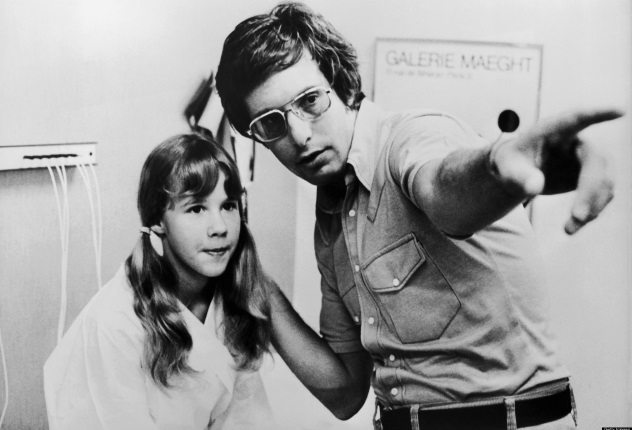
Following up his success with 1971’s The French Connection, William Friedkin made the terrifying film classic The Exorcist in 1973. The film proved to be even more successful than his previous work, being nominated for ten Academy Awards and winning two.
Most of the performances seen in the final product weren’t achieved without help from Friedkin. Taking after D.W. Griffith’s directing style, Friedkin would do various things to influence actors’ emotions for a particular scene. He would fire real guns behind them to mimic the effects of being startled and slapped William O’Malley right before filming to get a sincere reaction (the result of which is still seen in the film).
These being before the days of CG, for the effect of Regan’s cold room, the stage was chilled below freezing, causing the crew members’ perspiration to freeze. Linda Blair, the actress who played Regan, wore only a nightgown for the duration of the shoot and says she still can’t bear being cold.[1]
But perhaps the worst on-set occurrence at the hands of Friedkin was in the scene where Ellen Burstyn’s character gets thrown back by a demonic force. The effect was achieved via a rope harness, which violently pulled the actress backward, resulting in a permanent spinal injury.
The Exorcist is nonetheless cemented as one of the most frightening horror films to date.
9 Francis Ford Coppola
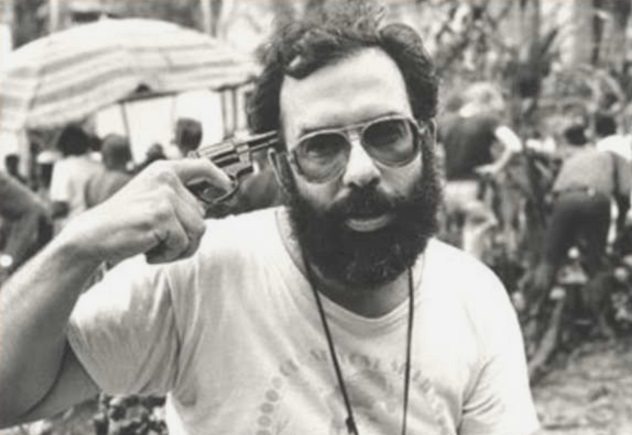
Although this influential director’s main claim to fame is likely his magnum opus, the Godfather series, Francis Ford Coppola’s 1979 film Apocalypse Now was also highly regarded. But like many of the films featured on this list, it all came at a price.
The production was plagued from the beginning. It took multiple tries before Martin Sheen was hired as the lead, Coppola was writing the script as he went, and the shoot in the jungle was hellish, resulting in many crew catching various illnesses.
Sheen suffered in various ways. In an opening scene, his character punches a mirror and rubs the blood on his face in a drunken stupor. This was real and largely prompted by Coppola’s psychological manipulation of the actor, telling him, “You’re evil. I want all the evil, the violence, the hatred in you to come out.”[2] Coppola also kept Sheen drunk and locked in the hotel for two days.
The making of the film seemed to mimic the character of Kurtz and his slow descent into insanity as actors went on crazed drug binges with too much free time on their hands. Dennis Hopper was practically paid in cocaine and alcohol, monsoons put people in danger, a prop person put actual dead bodies in a group of fake ones, and Sheen suffered a heart attack in the jungle, something he was convinced meant he was dying.
Coppola himself was fraught with the stress of the project. By the shoot’s end, he’d lost 45 kilograms (100 lb), had an epileptic seizure, and attempted suicide multiple times. The project that was projected to be six weeks long turned to 16 months, and despite the final film’s critical acclaim, a documentary on the hellish filming process was released in 1991, titled Hearts of Darkness: A Filmmaker’s Apocalypse.
8 Michael Bay
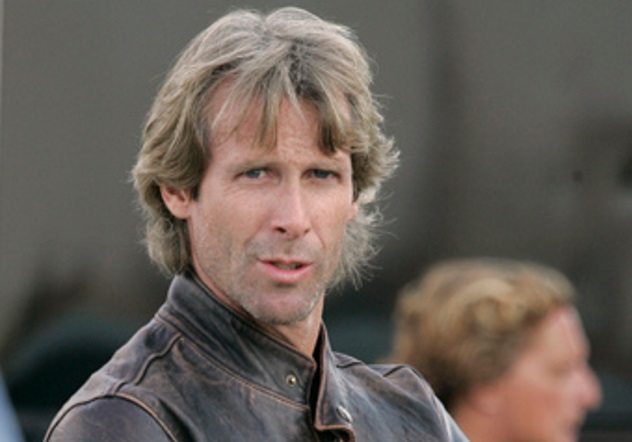
While not risking the lives of his cast as much as Coppola, infamous action movie director Michael Bay has had complaints about him made before.
Perhaps the most notorious controversy came from Megan Fox’s feud with and comments on Michael Bay as director, having worked with him on the first two films of the Transformers franchise. She told Wonderland magazine that Bay was a tyrant on-set and a nightmare to work for, giving her directions like, “Just be sexy,” and making the two leads do dangerous stunt work. Bay initially took the comments in stride, but after Steven Spielberg discovered Fox compared Bay to both Napoleon and Hitler, Bay fired her from the franchise at Spielberg’s behest.
This wasn’t the first example of Bay’s sexist interactions with female actors, according to Kate Beckinsale, who played a lead in his 2001 blockbuster Pearl Harbor. While Bay had nothing but good comments for his two male leads, Ben Affleck and Josh Hartnett, he would openly say Beckinsale “wasn’t so attractive that she would alienate the female audience.”[3]
Bay’s on-set actions with notably volatile actor Shia LeBeouf were unreasonable and enough to send the two over the edge. Similarly, after comments by Hugo Weaving were made about his role in the Transformers series (which he felt was “meaningless”) Bay retorted insultingly, stating, “Be happy you even have a job—let alone a job that pays you more than 98% of people in America.”
It isn’t very surprising that the man who brought us the Transformers films and Pearl Harbor is more concerned with visual appeal and money than treating actors well.
7 Werner Herzog
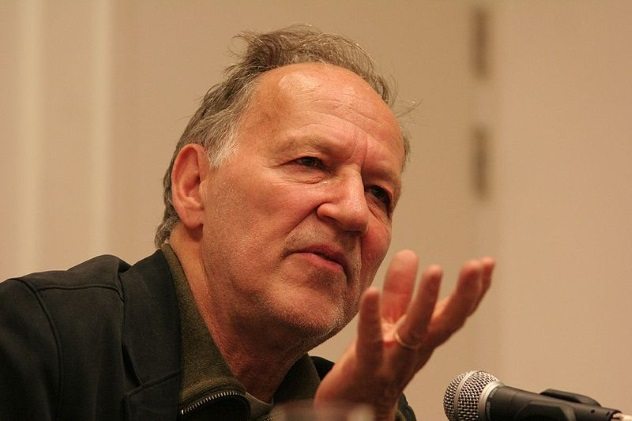
German actor Klaus Kinski was well-known for having numerous tirades on set and being a general hothead. It is surprising, then, that the partnership between Kinski and director Werner Herzog proved both turbulent and highly successful.
The director’s and actor’s relationship was well-documented in Herzog’s 1999 documentary My Best Fiend, portraying not only the antics of Kinski but of Herzog as well. Amid several fights with his lead, Herzog on one occasion held Kinski at gunpoint and threatened to kill him and then himself if he left the set. Kinski complied.
Being a documentarian, Herzog doesn’t like the confines of studio spaces to shoot his films and prefers the unpredictability and danger of shooting on-location. He’s gone to extraordinary lengths for realism, recreating the hellish conditions of being captured by the Viet Cong for 1998’s Little Dieter Needs to Fly and practically torturing Christian Bale for 2006’s Rescue Dawn. These are small feats for the man who has dragged a 320-ton steamship up a hill and filmed inside a volcano before eruption for his films.
The difference between Herzog and many directors on this list is that Herzog would do many of the things he asked of the actors before they did, leading to injuries and multiple malaria infections for the director.[4] Now that’s determination.
6 Roman Polanski
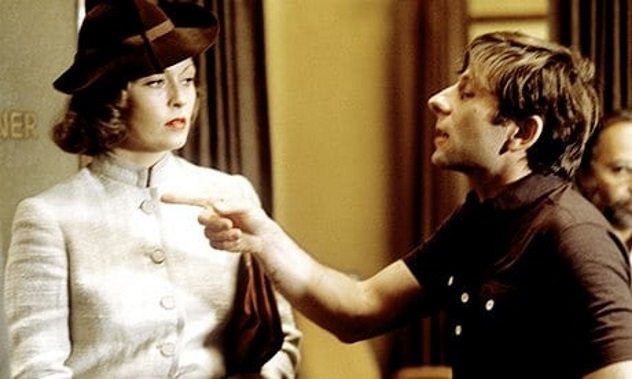
Roman Polanski is one of the more sympathetic directors on this list. He’s been through several hardships in his life, including surviving the Holocaust as a Polish-Jewish boy and having his wife and unborn child tragically murdered by the Manson Family in 1969. However, Polanski, being a perfectionist and visionary director, didn’t mix well with actress Faye Dunaway during the filming of 1974’s Chinatown.
Their on-set feud began with Dunaway’s appearance. Polanski modeled the actress’s look after his late mother. When a makeup person was working on Dunaway, Polanski vetoed the design and covered her face in powder. At one point, when asked for motivation, Polanski replied, “Say the f—ing words, your salary is your motivation.” Dunaway understandably didn’t like his style and called him “domineering,” “abrasive,” and an “autocrat,” while Jack Nicholson remarked, “Roman’s an irritating person whether he’s making a movie or not making a movie.”
Fights between Dunaway and Polanski really began after Polanski plucked a hair from Dunaway’s head that was interfering with a shot. Dunaway went ballistic, and while this is a minor offense on Polanski’s part, he later reasoned it was his way of directing and that “she was a piece of chess.”
The most infamous clash between the two was when Polanski refused to let the actress use the bathroom, after which Dunaway threw a cup of her own urine at the director. He said, “You c—t, that’s piss!” to which she replied, “Yes, you little putz!”[5] The rest is history.
5 Henri-Georges Clouzot
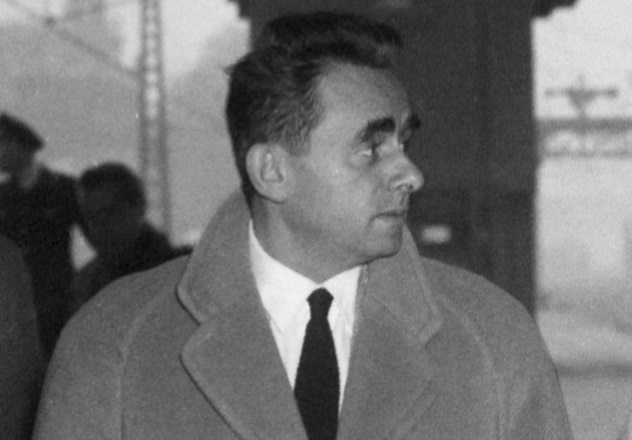
Henri-Georges Clouzot was a groundbreaking French director known for his thrilling, Hitchcock-esque dramas like 1953’s The Wages of Fear and 1955’s Les Diaboliques. His films were no-nonsense, and likewise, his treatment of actors involved little humor. Like Werner Herzog, Clouzot often strove for realism in his films. For example, in Les Diaboliques, when students were supposed to be eating rotten fish, they were instructed to eat actual rotten fish .
Suzy Delair and Clouzot were a couple for 12 years, and the actress later starred in two of his films. Remarking on Clouzot’s manipulation of actors, Delair said, “So what? He slapped others as well. [ . . . ] He was tough, but I’m not about to complain.” Clouzot repeatedly slapped around cast members to alter their emotional state and gave Bernard Blier a real blood transfusion in Quai des Orfevres, but perhaps the worst was his treatment of actress Brigitte Bardot on the set of his 1960 film, La Verite.
The two clashed significantly, especially after a scene where Clouzot plied Bardot with alcohol and had her consume numerous sleeping pills, only to get her stomach pumped shortly after filming the scene. At one point, Clouzot was so fed up that he shook her by the shoulders, screaming, “I don’t need amateurs in my films. I want an actress!” Bardot responded with a slap and the reply, “And I need a director, not a psychopath!”[6]
Most of Clouzot’s treatment of actors also stemmed from pessimism, something he tried to portray in films by revealing the subtler evils of humanity, which he learned from spending five years in a sanatorium for tuberculosis. Clouzot was a mentally tortured soul later in his life, but his actors were the ones physically tortured.
4 Alfred Hitchcock
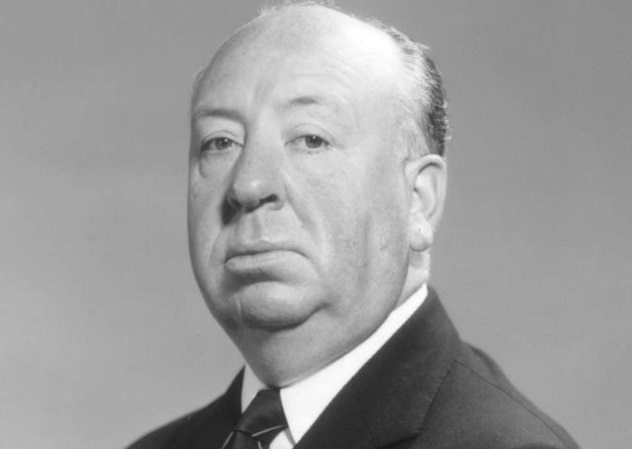
Cinema’s master of suspense is notable for his films as well as his eccentric personality and iconic image. And while most of his movies were successful and certainly thrilling, his famous remark that “actors should be treated like cattle” outlines the mentality he held for his stars.
His first of many recorded instances of actor abuse occurred on the set of his 1935 film, The 39 Steps. He would announce lead actress Madeline Carroll’s presence on-set by yelling, “Bring on the Birmingham tart!” and would leave her handcuffed to her costar for hours on end, claiming to have lost the key (an act that caused bruises). Other times, when he wanted a sincere reaction of surprise or shock, Hitchcock would undo his belt as if he was going to expose himself to the actress.
This wasn’t an isolated incident, however, and many of Hitchcock’s cruelties resulted from his notorious penchant for blonde female leads. He took pleasure in agitating his actresses with crude sexual jokes, even going as far as making up a story about sleeping with Ingrid Bergman and having actress Janet Leigh filmed in the shower for a six-day shooting period for 1960’s Psycho.
But by far, the worst was his treatment of lead Tippi Hedren while shooting 1963’s The Birds. Like many of his prior leads, Hedren was a blonde whom Hitchcock became infatuated with. After she refused some of his advances, Hitchcock had live birds attached to Hedren instead of mechanical ones for the shooting of a scene, which ultimately required her to be hospitalized.[7]
Donald Spoto’s book Spellbound by Beauty outlined some of the abuse behind the scenes: Hitchcock requested Hedren to be sexually available to him in their contract and practically ruined her career by turning down numerous film roles on her behalf as per the contract’s terms. Regardless, the release of the book and its 2012 HBO adaptation The Girl has at last revealed Hedren’s story.
3 Akira Kurosawa
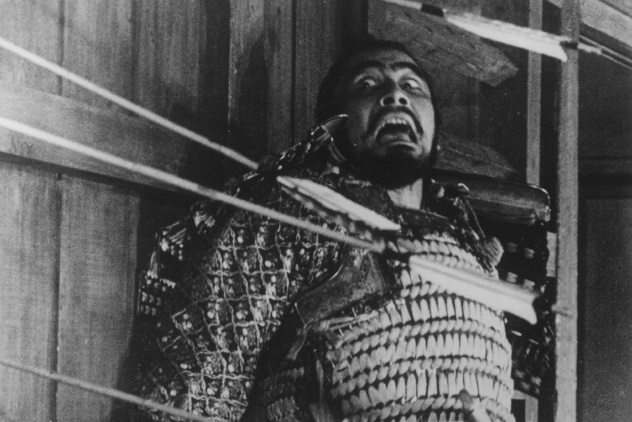
Akira Kurosawa is likely most known for his international success with films like Seven Samurai and Yojimbo as well as being one of the best filmmakers in the world. His trademarks seem to be in distinct imagery (like in 1990’s Dreams) and the extremity with which he’ll operate in every facet of his films.
It was this mentality that Kurosawa treated lead actor Toshiro Mifune with during the filming of 1961’s Throne of Blood. Not satisfied with Mifune’s reaction of fear upon nearly getting shot with arrows in one of the later scenes, Kurosawa decided to have real arrows shot at the actor.
Although the arrows were being shot by professional marksmen, there was still the risk of injury if Mifune moved an inch, and the experience proved a haunting experience for the actor.[8] However, it certainly got the display of fear across.
2 Stanley Kubrick
This director’s reputation as an absolute perfectionist and contributor to the art form precedes him. Stanley Kubrick would often film upwards of 50 takes for a particular scene to get the absolute best version and to allow actors to not consciously think about their acting. As one can imagine, this method proved strenuous on some people he worked with.
The filming of 1980’s The Shining was particularly tumultuous, with Kubrick pushing his actors to the limit with numerous methodical shoots. Shelley Duvall constantly butted heads with Kubrick and was emotionally exhausted from 12-hour shoots and being away from family for a year. Scatman Crothers also suffered under Kubrick, reportedly breaking down in front of the director crying and later vowing to never work with him again. Behind-the-scenes footage was recorded by Kubrick’s 19-year-old daughter, and the extent to which the actors were worked is explicitly shown with Jack Nicholson’s manic personality, daily script rewrites, and Duvall losing hair and chain-smoking from the stress.[9]
Kubrick’s methods didn’t always prove cruel or fruitless to his actors, however. Many saw the importance of his perfectionism and how it transformed them as actors. Many of his breaks on-set were devoted to talking to the actors about their characters.
1 David O. Russell
Besides being known for several Academy Award nominations for films like 2010’s The Fighter or 2013’s American Hustle, David O. Russell is likely best-known for his poor temperament with some of his actors.
Actor George Clooney and Russell notoriously didn’t get along, having worked together on both ER and 1999’s Three Kings. Their feud escalated into a physical confrontation on the set of the latter, when Clooney objected to Russell yelling at a crew member, telling him, “David, it’s a big day. But you can’t shove, push, or humiliate people who aren’t allowed to defend themselves.” Russell then instigated with several headbutts, after which Clooney grabbed him by the throat, resulting in a fight so bad that Clooney referred to it as the worst experience of his life.[10]
Perhaps one of the more infamous examples of director-actor confrontations was in Russell’s arguments on the set of 2004’s I Heart Huckabees with actress Lily Tomlin. Videos of the heated confrontations were leaked onto YouTube and are shocking, to say the least, with actress and director hurling numerous obscenities at each other.
Although Tomlin revealed she quickly made up with the director, new rumors, like Russell getting into heated arguments with Jennifer Lawrence while filming Joy, don’t sound too hard to believe.
+ Masanori Hata
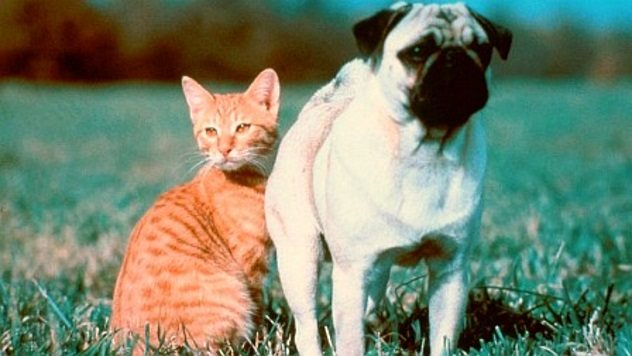
Occasionally, director cruelty isn’t reserved for just humans; several animal actors throughout film history have been similarly mistreated. In the case of the 1989 children’s flick The Adventures of Milo and Otis, even with the majority of the cast being animals, plenty of actor mistreatment still occurred.
Although the overall tone of the movie is cheery and directed toward younger audiences, the surfacing of rumors that over 20 cats were killed in the making of the film definitely put a dark stain on the production. While this claim was never confirmed, evidence of animal mistreatment can be seen in many scenes, including the titular cat falling hundreds of feet into the ocean or confronting a bear.
Since this was filmed in Japan, the filmmakers could have gotten away with significantly more than American filmmakers, who often must include a disclaimer from the American Humane Association in the end credits. The absence of this disclaimer and replacement with a more vague claim in the end credits of Milo and Otis only adds to the suspicion.[11]
Thatcher is a storyteller in a variety of ways. You can check out his early, budding YouTube channel here or simply email him at [email protected].
Read more about movies that weren’t exactly pleasant to make on Top 10 Terrible Accidents From The Early Days Of Film and 10 Notorious Film Sets That Injured, Maimed And Killed.
